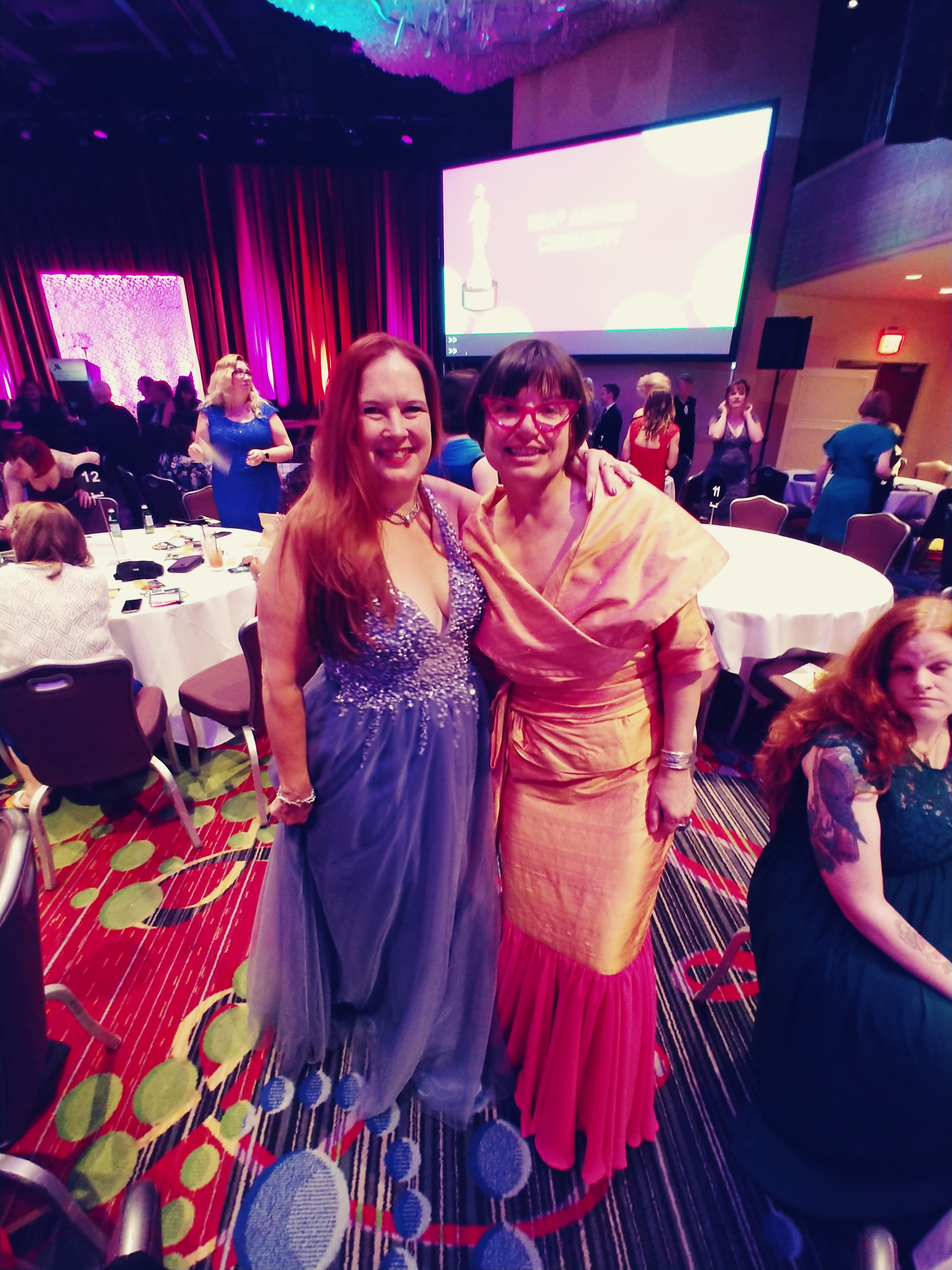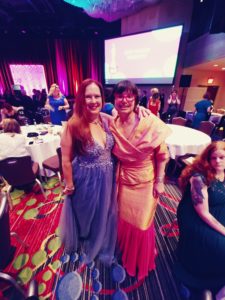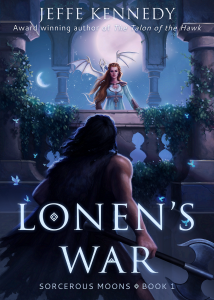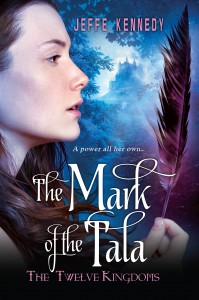On Sheryl Sandberg’s LEAN IN and great advice for women in business that’s given me insight into my own writing career, including keeping my eye on long-term and 18-month goals, and why I don’t love the heroine’s journey.

RITA ® Award-Winning Author of Fantasy Romance

On Sheryl Sandberg’s LEAN IN and great advice for women in business that’s given me insight into my own writing career, including keeping my eye on long-term and 18-month goals, and why I don’t love the heroine’s journey.





Our topic at the SFF Seven this week is: “Heroes and heroines – how do you write them differently.” Come on over for my take.


The other day I saw a well-known reviewer discuss a popular book that concluded a trilogy. They commented that they enjoyed the grand finale, but wished that the hero – who’d been built up as being the most powerful of his kind – had wielded more of that power in the final battle. I nodded along, having felt the same way. I also know why the story skewed in that direction. The heroine stepped up and took the lion’s share of the heroics in defeating the Big Bad.
Does it have to be that way? I don’t know.
As both a reader and a writer, I see stories through a dual lens. I very much enjoyed that trilogy and loved the ride, but I did feel a little let down that this hero I’d come to love never truly flexed this incredible power that had been hinted at all along. At the same time, my author mind was running the plot analysis and thinking, “Well, yeah – his power had to be downplayed for the heroine to shine.” Otherwise we’d end up with yet another story where the hero saves the day while the heroine cheerleads with breasts bouncing on the sidelines.
In fact, it drives me crazy when the hero takes over the narrative from the heroine – the reverse situation of this example – and I see stories fall into that trap all the time. And I am definitely talking about stories where there are two primary protagonists, one male and one female. The gender politics, assumptions, and subconscious programming come into play with the hero/heroine dynamic that aren’t as present or pronounced with male/male or female/female pairings. Or, so I believe. Someone who’s more versed than I am in parsing those dynamics is welcome to take up that topic.
What I see in hero/heroine, male/female pairings is that the female character will often begin with a terrific set of strengths and challenges. She might have a fascinating profession, or be determined on a quest or revenge. As the story plays out, however, gradually the hero takes on the active role, handling the greatest challenges while the heroine takes a step back.
An example that springs to mind is a story where the heroine has returned from an abduction, having left a child behind. She actively manipulates her family and events so she can marry a man who will take her back to recover the child. Enter the hero, who arrives in the story entirely as a tool for the heroine to get what she wants. As the story progresses, she discovers her magic and they engage in adventures and battles. By the end, however, I was dismayed to see her pretty much hanging out back at the castle, pregnant and watching the kids, while the hero went out and battled the Big Bad. He had become the far more interesting and active character.
I think this happens in part because of gender stereotypes and the weight of stories and tropes in our heads. It’s easier to give over the action to the big warrior hero, because we have a lot of precedence for that kind of story. But it doesn’t have to be that way. As we’ve seen with all kinds of gender-swapped stories, we can produce fantastic narratives with roles and tropes switched up.
But do we have to switch and swap?
As with my opening example, it wasn’t satisfying to me as a reader to have the hero basically sidelined either. It’s a challenge, but I think stories that have a male/female pairing – whose adventures in part show what a great team they make -should strive to give equal limelight to both the hero and heroine. I think Ilona Andrews does a great job of this in their books, giving both the hero and heroine critical roles in overcoming the challenges, each playing to their own strengths.
What do you all think of this – am I wrong? Who else writes this balance well?


I received a very interesting set of questions on Facebook from a reader who just finished reading WARRIOR OF THE WORLD. They’re such good questions that they deserve a thoughtful answer, so I decided to do that here. I hope she doesn’t mind!
She said:
…one of the things that I feel like you do extremely well is create empathy for both “sides” of a war/ disagreement/conflict. In art, as in life I see most often empathy/sympathy being created with blame/making the other side the “bad guy”, etc. You seem to…skip that part? So this is a two part question:
1. Do you find yourself able to do that within your own life? (like are you less of a blamer, more of a solution finder – I’m working so so so hard on that with my kids and am interested in the HOW of it)
2. And two, HOW do you do it, first within yourself, and then secondarily, how do you WRITE it so that I, as a reader, don’t find myself coming down overly hard on one side – how do you make the gray the overwhelming tone, rather than the black and white?
So, here are my answers, plus a few more thoughts.
Looking at the story in WARRIOR OF THE WORLD, part of what I wanted to get was the female perspective on war. I think a whole lot of war – both in real life and in fiction – tends to be driven by male aggression. It’s not across the board, but I think it’s a strong driver, particularly in this century when so many wars have been driven by political ambitions and corporations wanting to monopolize resources. The war pending in this book is about controlling scarce resources, with those on the lean end wanting to attack those with plenty. The women in the book point out that just because one arm of a society is aggressive, however, doesn’t mean that everyone in that culture feels the same. A large part of any society gets dragged along with whatever the leaders decide – and often those being dragged along are women, children, the elderly, and those unable or unwilling to be warriors, for whatever reason. I think this was maybe different in other wars. I like to imagine the women of the American Revolutionary War and Civil War were much more involved because those were conflicts that directly impacted daily living and quality of life.

Now, men often criticize women writers for focusing on what they perceive as minutiae. Naturally, however, the person who sits down at table to consume a meal has a very different perspective than the person responsible for putting three nutritious meals on that table every day. This doesn’t have to fall out along gender lines, but it often does, particularly in the last century. When you have pretty much one gender in another country fighting a war and the other back at home, then you know which one is thinking about the daily minutiae of living. So, in this story, I wanted to deliberately draw that out and have the women of the family say, “Hey, who are you raging at? Do you think the babies and eldsters want to attack you?” They’re taking that position of recognizing the other’s story.
This is something that’s important to me as a person and as a writer, which is part of why I love the trope of enemies-to-lovers. That’s part of why I put LONEN’S WAR at the top, though I also explored similar themes in THE MARK OF THE TALA. That LONEN’S WAR cover encapsulates a great deal of that theme for me – of confronting the supposedly monstrous enemy and coming to not only understand them, but to love them. That whole Sorcerous Moons series is about two warring cultures coming together in part by learning each other’s stories.
How’s that for a long answer?